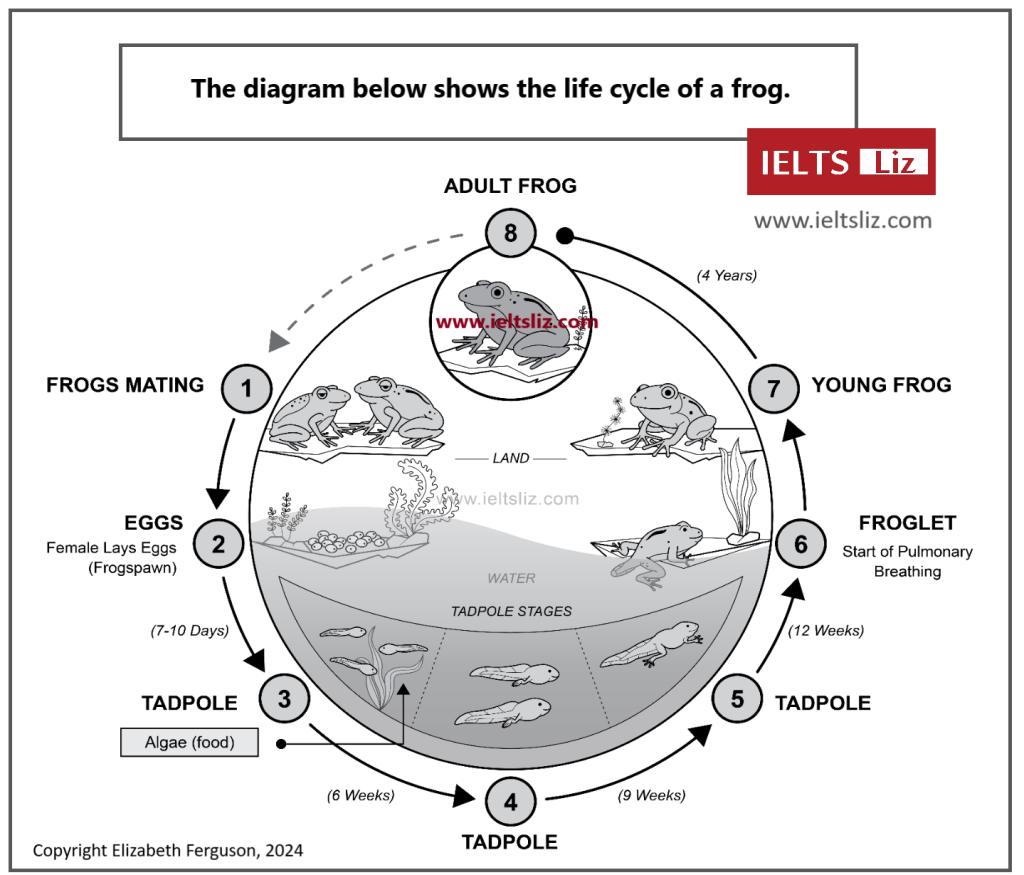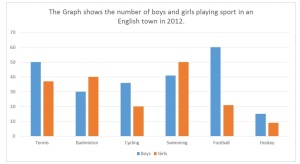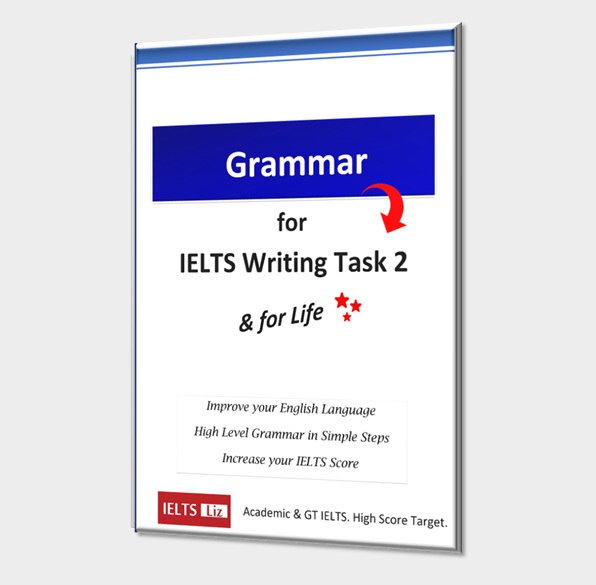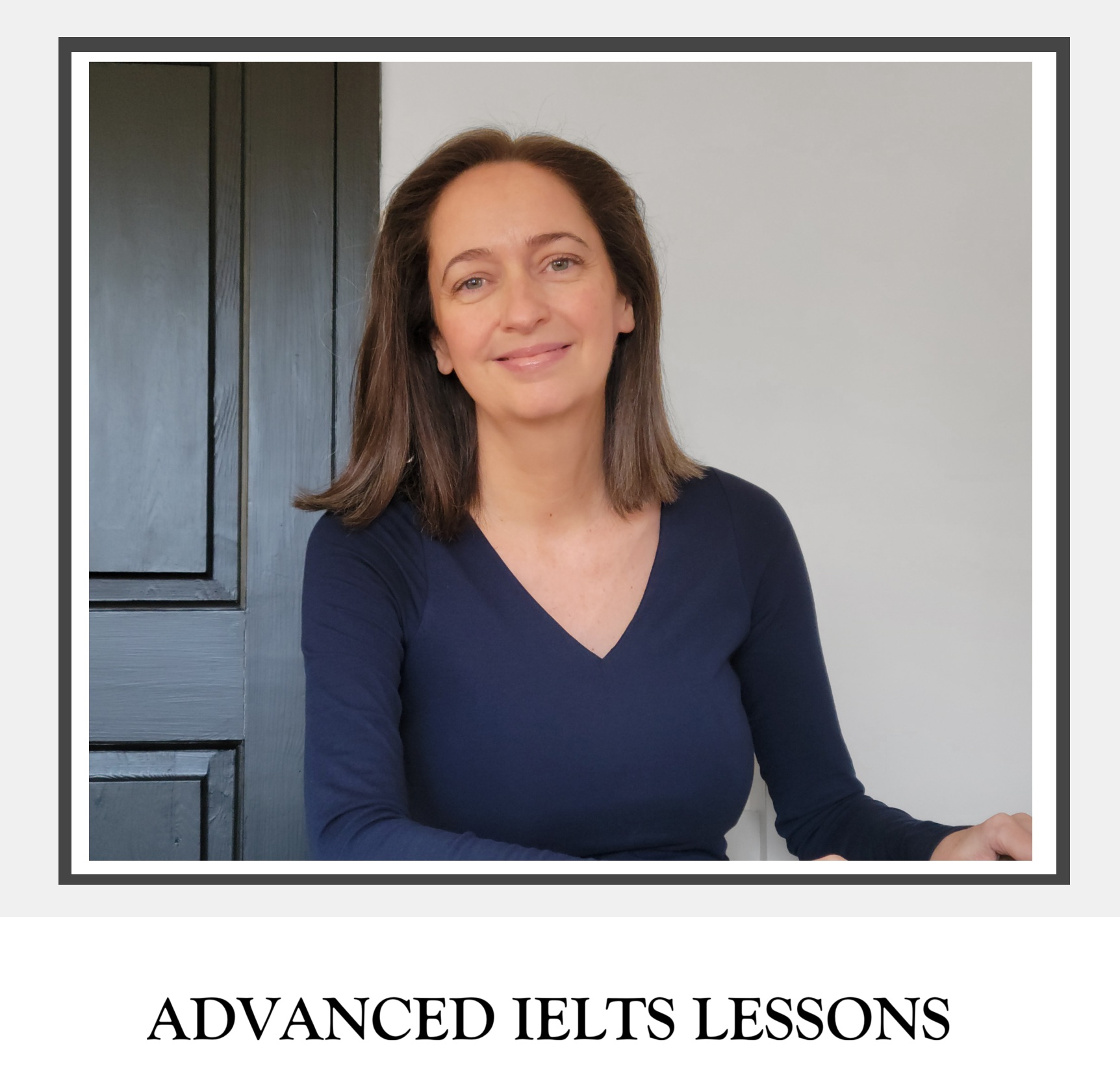For an IELTS diagram, you need an introduction and overall paragraph containing the main features of the diagram or process in your report. The overview is one of the most important parts of your report and a full overview is essential for a high band score.
The diagram below is of the life cycle of a frog. Life cycles and other cycles, such as the water cycle, are quite common diagrams to get in IELTS writing task 1. The other common type is a process which shows how something is made or how it works.
Introduction and Overview for IELTS Bar Chart
Introduction Paragraph
The introduction paragraph for most diagrams in IELTS is short. Don’t try to make it longer. All you need to do is paraphrase the description given above the diagram.
Overview Paragraph
This is the most important paragraph is all writing task 1 (academic). This means you should aim to have a full overview with stages well summarised. This isn’t just about the number of stages, but an overview of what the main stages are. And yes, you can use the words given in the diagram. The words are given for you to use.
Model Answer Click Below:
Model Introduction and OverviewIntroduction Options
- The diagram illustrates the stages in a frog’s lifetime.
- The diagram illustrates the different stages in the life of a frog.
- The diagram illustrates the phases that a frog passes through during its lifetime.
Overview Paragraph
- Overall, a frog passes through eight stages which start with adult frogs mating and eggs laid in the water from which tadpoles emerge. Tadpoles pass through a number of stages before becoming a froglet, a young frog and finally an adult frog, starting the life cycle again.
Note: this overview is complete. It gives a full summary of the key stages without going into detail. All the detail is then given in the body paragraphs.
Full Model Answer
The diagram illustrates the developmental phases that a frog passes through during its lifetime.
Overall, a frog passes through eight stages which start with adult frogs mating and eggs laid in the water from which tadpoles emerge. Tadpoles pass through three stages before becoming a froglet, a young frog and finally an adult frog, starting the life cycle again.
Initially, adult frogs mate and then the female frog lays eggs in the water, which are called frogspawn. Seven to ten days later, tadpoles emerge from the eggs which can swim and eat algae for food. Six weeks later, the tadpole grows and develop back legs. This development continues and nine weeks later it develops front legs. Its head and body also becomes more pronounced.
Twelve weeks after the tadpole stages, it becomes a froglet which resembles a small frog. However, it still has a tail, although shorter than that of a tadpole. At this stage, it also develops pulmonary breathing which enables it to leave the water and breathe air on land. Over time, the froglet becomes a young frog and eventually, four years later, it is an adult frog ready to start the life cycle again.
.
Recommended Lessons
.







